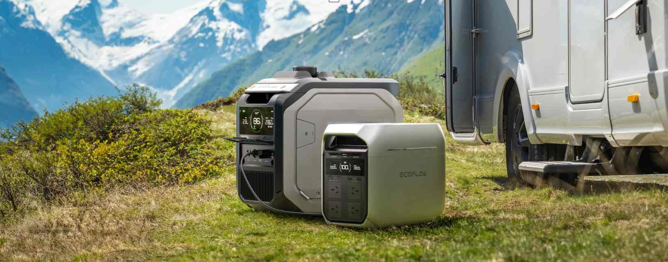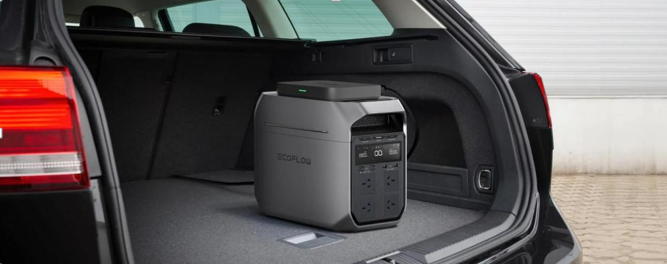What Size Battery Do I Need for Weekend Camping?
Thinking ahead is essential when organizing a weekend camping trip, especially when it comes to power. Having the right battery size guarantees that your equipment runs well, whether you’re parking your RV by the lake or setting up a tent in the woods. Steer clear of dead devices and guesswork. This article describes how to pick the best camping battery for your requirements. We’ll go over the devices you want to utilize, their power consumption, and how to figure out how big of a battery you’ll need to run everything over the weekend. Stay strong, stay safe, and confidently enjoy your trip.
What Devices Will You Use While Camping?
Common Power-Hungry Gear to Consider
Knowing what devices you’ll bring allows you to determine your overall power requirements. Portable fridges, CPAP machines, LED lights, fans, and cell phones use the most electricity. When you add gadgets like drones, tablets, cameras, and laptops, the battery needs increase quickly. High-wattage appliances, such as electric ovens or kettles, may deplete a battery in hours. Prioritize what must be charged and what may be kept off the grid. Every item adds up, so making a detailed list before determining your camping battery capacity is critical to avoid surprises while you’re far from the local outlet.
How to Estimate Daily Power Usage
List all of your devices, their wattages, and the number of hours you plan to use them each day to get an idea of how much you’ll use them. Watt-hours (Wh) are calculated by multiplying watts by hours. For instance, 50Wh is utilized by a 10W bulb for five hours. After doing this for every device, add them up. This provides you with an approximate daily usage amount. For every day of your journey, repeat the procedure. Accuracy is important since overestimating costs money on surplus capacity while underestimating might leave you helpless. Your camping battery will be the proper size, effective, and dependable in the outdoors if you have a realistic consumption plan.
See also: How Tech Is Helping to Preserve Endangered Species
Seasonal and Location-Based Power Needs
Location and season have an impact on power requirements. You’ll need energy for tent warmers or heated blankets in the cold. Longer daylight hours and cooling fans may cause use patterns to change in the summer. More stored electricity is needed in cloudy or wooded areas since solar charging is reduced there. You’ll need more capacity because colder temperatures can also lower battery efficiency. Off-grid, remote locations might not have access to recharging stations, which would put further strain on your primary camping battery. Always adjust your power strategy to the terrain and season of your journey. This guarantees that you won’t be caught off guard when the laws of nature alter.

How to Calculate the Battery Size You Need
Amp-Hours (Ah) and Watt-Hours (Wh): What They Mean
The two most important units for understanding battery specifications are amp-hours (Ah) and watt-hours (Wh). Watt-hours indicate the overall amount of energy stored, whereas amp-hours indicate the amount of current a battery can provide over time. Multiply Ah by voltage (often 12V) to convert. A 100Ah battery at 12V, for instance, may store 1,200Wh. Since most gadgets list power consumption in watts, watt-hours make usage estimation simpler. Understanding both makes it easier to adjust the power of your battery to your weekend requirements. This knowledge is the first step in choosing the best camping battery since it prevents you from overpowering or underpowering your setup.
Step-by-Step Battery Size Calculation
First, figure out how many watt-hours your equipment requires each day. By the number of camping days, double that figure. To convert the value to amp-hours, divide it by the voltage of your battery, which is typically 12V. Include a 20–30% safety and inefficiency buffer. For instance, 800 x 2 equals 1,600 Wh if you require 800 Wh daily for two days. Calculate 1,600 ÷ 12 = ~134Ah by dividing by 12V. Add 134 x 1.3 = 175Ah, or 30% buffer. That is the smallest battery size you may use. This guarantees that, even in the event of unforeseen usage, your camping battery will provide consistent power throughout your journey.
Battery Efficiency and Reserve Capacity
Not every battery can reach its full rated capacity. For example, in order to prevent damage, lead-acid batteries should not be discharged below 50%. This implies that you get just 50Ah out of a 100Ah battery. Up to 90% of lithium batteries can be used. Additionally, take into account your battery’s reserve capacity or how long it can operate necessary loads without needing to be recharged. You will want additional capacity if you are not recharging regularly (for example, without solar panels). It’s important to balance useful energy, capacity, and practical use when selecting a camping battery. When you’re off the grid and far from backup, knowing efficiency helps you avoid running out of fuel.
Conclusion
Choosing the proper batteries for weekend camping begins with a clear strategy. List your gadgets, estimate your daily power use, and consider the surroundings, gear, and battery efficiency. Then, determine your required capacity with a healthy buffer. Knowing your battery size prevents dead electronics, damaged food, and restless nights. Whether it’s powering a fridge, lights, or your phone, the right Camping battery turns an average trip into a smooth, enjoyable escape. Invest in proper planning and the right gear—you’ll gain peace of mind and more time to focus on what really matters: enjoying the great outdoors.






